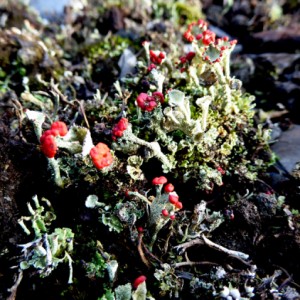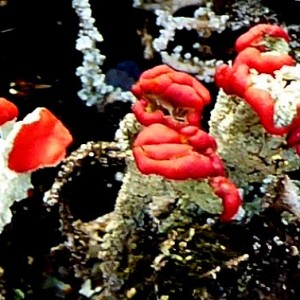The Forbidden Zone
A few miles away, across a river, beyond a village and behind an old church, a huge metal fence 10 feet high with a spiky top rears up and stretches into the distance. It encloses over 1000 acres of land in this valley and the next: woodland, hillside, streams and the ruins of farms and cottages that were evacuated to create what was once one of the biggest secret underground arms depots in Europe. And yet you could live nearby for a lifetime and barely notice its existence, so well hidden is it still.
It was built in the run-up to the war in 1938 to store Royal Naval armaments: mines, torpedoes and other munitions, in 58 deep caverns carved out of the valley sides. Hundreds of people were drafted in to work here with houses, hostels, social centres, even a cinema, built for them. Complex precautions, including a decoy set-up in a neighbouring valley* [see below], were taken to ensure that enemy aircraft never discovered it.
The facility closed in 1992, putting many local people out of work. Since then it has been used for ‘storage’ by several large companies but it remains firmly out of bounds for members of the public.
I've been inside this place twice: on a one-off bus tour through the site i as part of a WW2 memorial event in 2010, and before that unofficially when a plan to store 'low-level' nuclear waste in the tunnels was proposed. Local people campaigned against it and small group of us broke away from a demonstration to sneak inside via an aperture in a remote part of the fence. We walked right down the main service road and were apprehended by police at the bottom. They took our names etc. but then let us go. I don’t imagine anyone wanted radioactive material kept hereabouts.
This place intrigues me. Only a small part of it remains ’in use’. The vast proportion of it is untouched by human foot and to the best of my knowledge no scientific survey has been done to ascertain the wildlife and natural history value of the neglected acres. It must be immense. Much of the area will be impenetrable now but I would love to follow the old tracks and to nose around the derelict buildings. Even outside the fence there is fascinating stuff to be seen.
The first extra shows what’s known locally as The Burning Ground. Being the furthest point away from the storage facilities it’s the place where an old friend of mine (who spent his working life here) took responsibility for incinerating all the expired and discarded explosives - sparing the lungs of other employees but damaging his own in the process.
The ground around must have become so scorched and tainted as to be near-volcanic. Even outside the fence the slatey rubble hosts a marvellous array of mosses and lichens, (second extra), along with a generous helping of rabbit pellets. And although the depot was only ever staffed by civilians there is a military presence among these organisms in the form of the red-lipped, scarlet-tipped “British soldier” lichen. At this time of the year its spore-producing fruiting bodies gleam underfoot like miniscule danger signs to the sharp eyed.(Enlarged in third extra)
(Relevant to the above is a wonderful book I'm currently reading called Islands of Abandonment: Life in the Post-Human Landscape, by Cal Flynn. It’s about just this sort of place: ghost towns, exclusion zones, wastelands and derelict settlements, and how nature creeps back into them, taking them over again and enabling all sorts of life forms to flourish anew. Beautifully written and thoroughly recommended if this sort of thing floats your boat.)
*https://www.blipfoto.com/entry/1996429




Comments
Sign in or get an account to comment.


